Many of the 21 California Missions we’ve visited have been beautiful gardens with majestic looking churches. Sometimes, it’s not the most beautiful or well maintained that makes a lasting impression but the most authentic. That is La Purisima Mission State Historic Park.
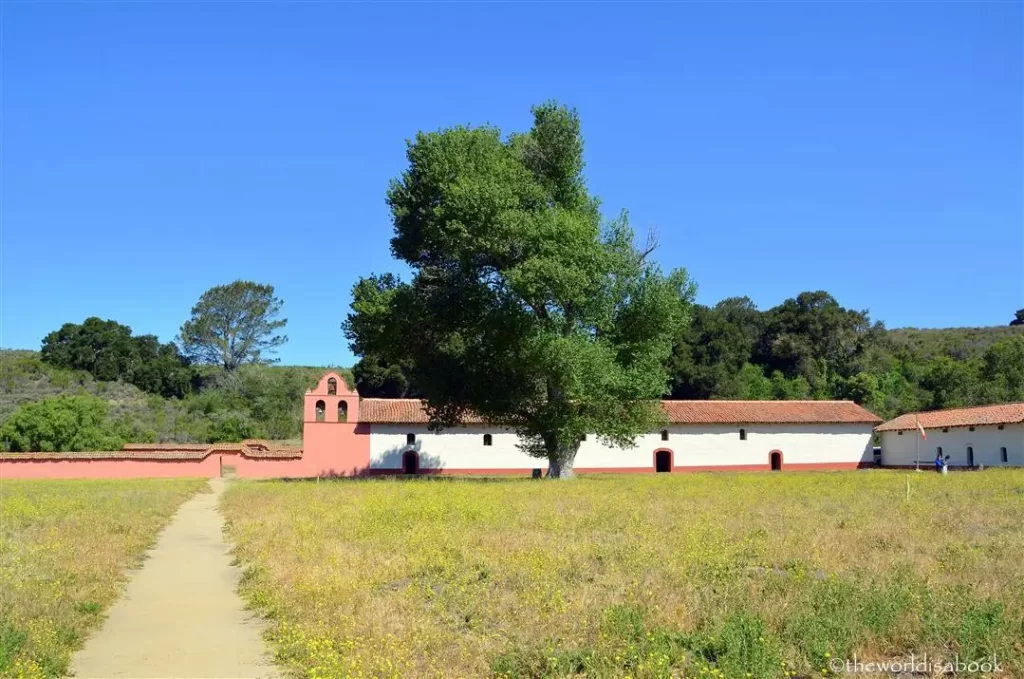
Location of La Purisima Mission
Mission La Purisima is located near the rolling hills and verdant vineyards of Central California. The mission, tucked away in hundreds of acres of isolated ranch land in the city of Lompoc, offers an easy side trip from Solvang, also known as the “Danish Capital of America.”
Considered the most restored of the Spanish Missions throughout California, this mission represents life here in 1820. In the 1930s, it underwent restoration with authentic furnishings, restoring ten of the original buildings. The mission had fallen into disrepair in the early 1900s due to neglect, ownership changes, and weather elements.
It was eerily quiet and there was hardly anyone here on a Sunday morning during a holiday weekend. The grounds looked deserted and had a rustic, ranch feel to it. History comes alive here so walk along with us through this living museum into Mission La Purisima’s past.
History of the La Purisima Mission
The Spanish Franciscan priest, Father Fermin Lasuen, founded Mission La Purisima Concepcion de Maria Santisima (Mission of the Immaculate Conception of Most Holy Mary) on December 8, 1787. It was the 11th mission among the 21 missions established in what eventually became California. The Mission flourished and at one time, was home to 1,000 Chumash Indians and over 20,000 cattle and sheep.
The Spanish used the missions as active outposts to baptize the Native Americans and convert them into Catholics. The Spanish empire employed the Chumash Indians as laborers and granted full citizenship in with promises of mission wealth and land in La Purisima.
However, the Spaniards did not fulfill those promises. This has remained a controversial topic in California’s history.
The Mission became the largest historical restoration project in America’s Civilian Conservation Corp. This included building 140,000 new adobe bricks.
Residence Buildings at La Purisima Mission
The distinctive residence building corridor was the main one that housed many of the restored rooms. They used the covered area for work, relaxation and social activities. It was a wonderful example of classic Spanish Mission architecture.
The rooms offered an interesting glimpse into the life at the mission and how it functioned as a thriving community in the early 1800s. We saw the soldier’s quarters, the corporal’s and master weaver’s apartments and priests’ rooms. They were all very sparse with beds that just looked very uncomfortable.
The soldier’s rooms or barracks were the quarters for 5-7 Spanish soldiers that protected the Mission. They prominently displayed weapons such as lances, swords, and rawhide shields above their beds.
The Mayodormo or Ranch Manager’s room was the only one that had a comfortable bed. It had amazing little details of period items displayed throughout the rooms.
Craft Rooms at La Purisima Mission
Over 100 people worked in the Mission’s weaving industry. The room below was a reproduction of what the weaving shop looked like back then. They spun and wove wool to make 1,000 blankets annually. They used these blankets within the mission or traded them to passing ships for necessities.
In the Candle Making Room, they showcased racks that they would lower into melted animal fat (tallow). Then, they built layers of “tallow” onto the wicks. They used tallow candles throughout the mission, except at the church’s altars. It actually smelled like wax and candles in here.
Mission La Purisima gained popularity for its production of leather and rawhide. In the leather shop room, they demonstrated the process of producing leather and rawhide. They used rawhide ties on roof beams and as ropes.
They produced leather, which they used for shoes and saddles, from tanned rawhide.
The Mission Chapels
There were two chapels within the Mission. One of them had a beautiful altar with colorful wall paintings. This is no longer an active church, unlike the other missions, so the chapels looked bare.
They assigned two missionaries to the missions. These chapels showcased how religious activities were celebrated here.
I can almost imagine the delicious Spanish food that they cooked in this kitchen. One of the great things about this mission was that they laid out everything in the open, without placing it behind glass windows.
They allowed visitors to walk through the rooms to enhance their overall experience. It wasn’t hard to imagine how life was like for the Spaniards and the Indians here.
The Outside Gardens at La Purisima Mission
Outside was a five-acre mission garden that showed the native plants and herbs grown here. The grounds were lovely for a peaceful and leisurely stroll. Fountains are part of many missions and this one had two beautiful ones.
There were also animals which included horses, donkeys, chickens, sheep, goats, pigs and even a bull and turkey in one part of the park. It was a reminder that this was a working ranch at one time. The kids were able to feed the horses with some hay but we wished we thought to bring carrots too.
We found reproductions of the Chumash Indians’ straw huts outside and even got a peek into how it would have looked inside.
Events at the La Purisima Mission
Several times a year, the mission hosts a recreation of life back in the days. Docents in costumes demonstrate weaving, candle making, adobe brick building, pottery and shows of their daily lives at the mission. It sounds like a wonderful way to educate the public.
Its authentic restoration has made this a favorite among visitors, teachers and historians statewide. Mission La Purisima is a designated state historic park whose grounds and structures are a “monument to California’s roots”.
It was a wonderful lesson in history especially for kids. My kids loved the expansive grounds to explore and the variety of animals to see. The details in the restored rooms really made us feel like we stepped back in time to mission life in the early 1800s.
Tips for Visiting La Purisima Mission
- Ticket Price: $6 per car good for one day admission
- Self-guided tours from 9AM – 5 PM everyday except Thanksgiving, Christmas, New Years Day. There were plenty of signs with room descriptions.
- Free 60-90 minute Guided tours offered everyday at 11:00 AM and at 1:00 PM on Saturdays.
- Time your visits for the interesting living history events showing Mission life by visiting the Events page.
- There’s a modern Visitor’s Center by the parking lot for restroom breaks and to see the mission’s restoration.
- Wear comfortable, walking shoes since you’ll be walking around a lot. This place is huge.
- Plenty of hiking and running trails with poison oak warnings. Get a map at the Visitor’s Center.
- Ghost tours available. This is considered one of the most haunted places in the state.
- Have a picnic on the grounds. Bring your own food and water since there are no stores on the grounds.
- Visit the Mission La Purisima website for more information.
*Have you visited any of the California Missions or Mission La Purisima?
Related Posts:
Pin it for later!
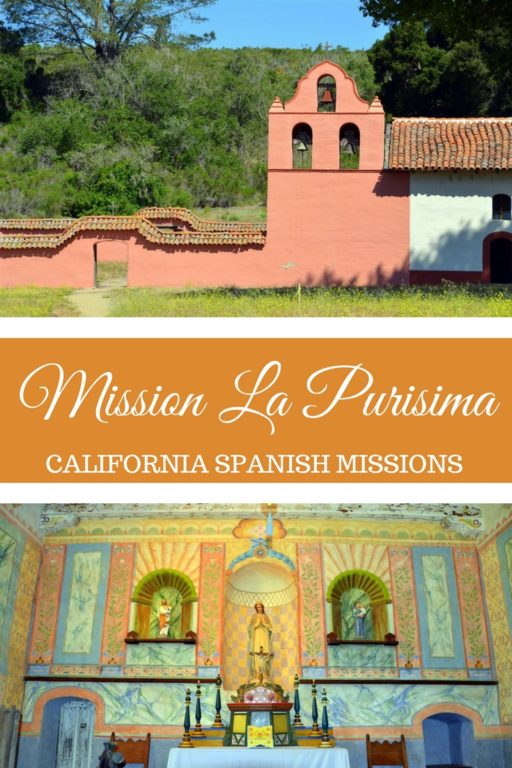
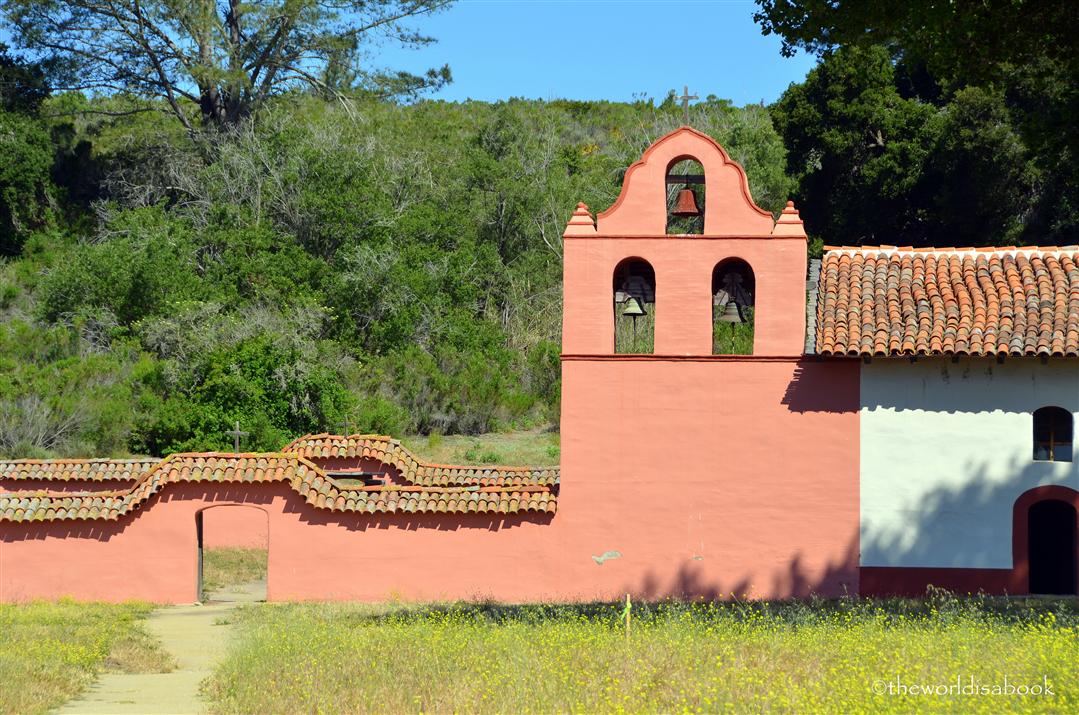
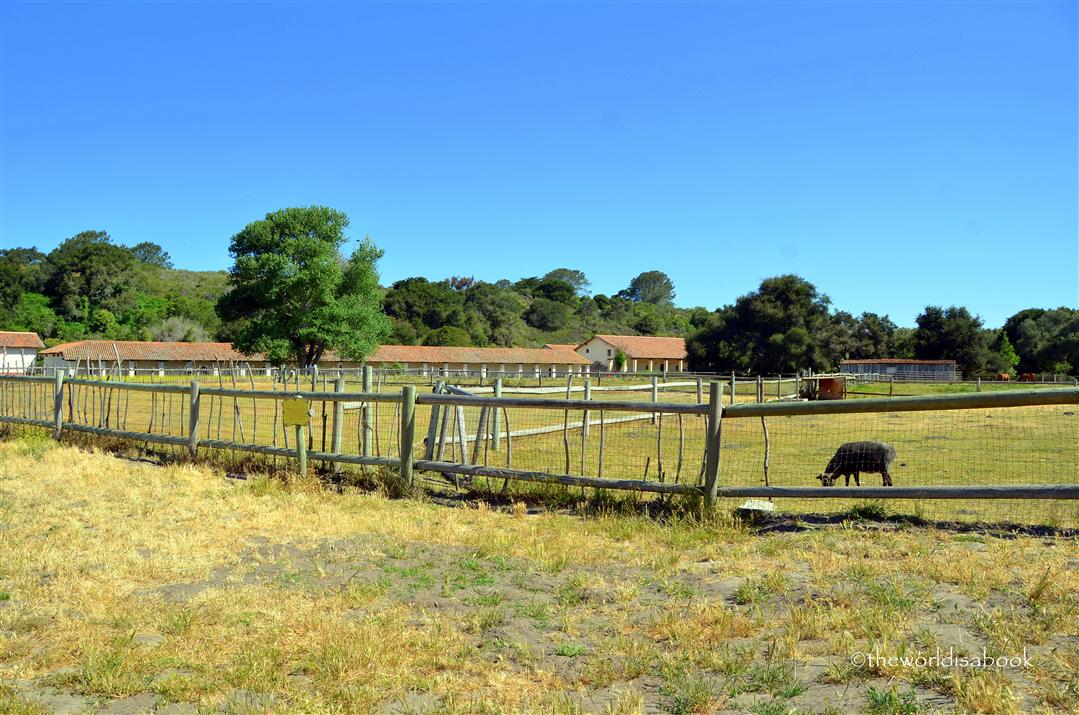
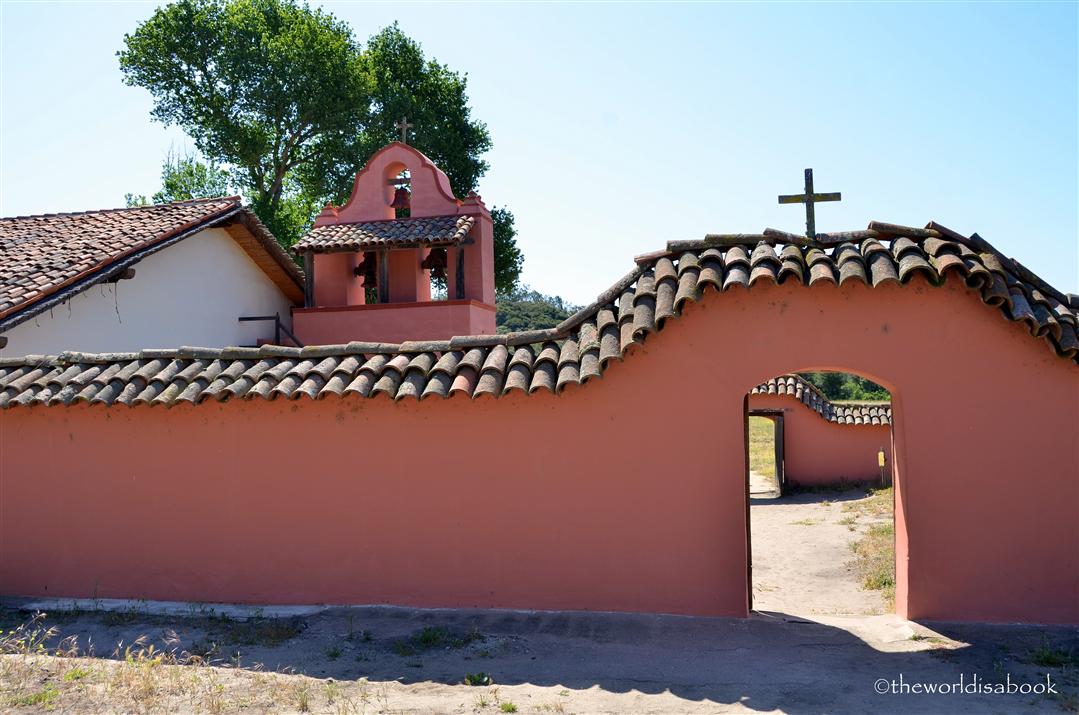
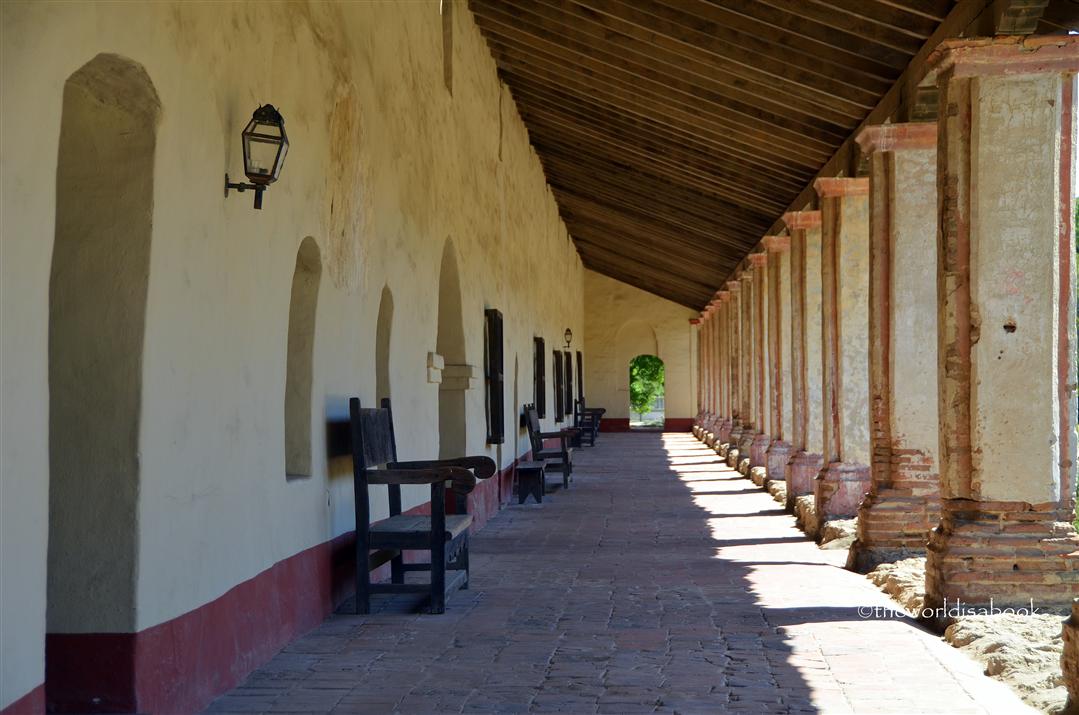
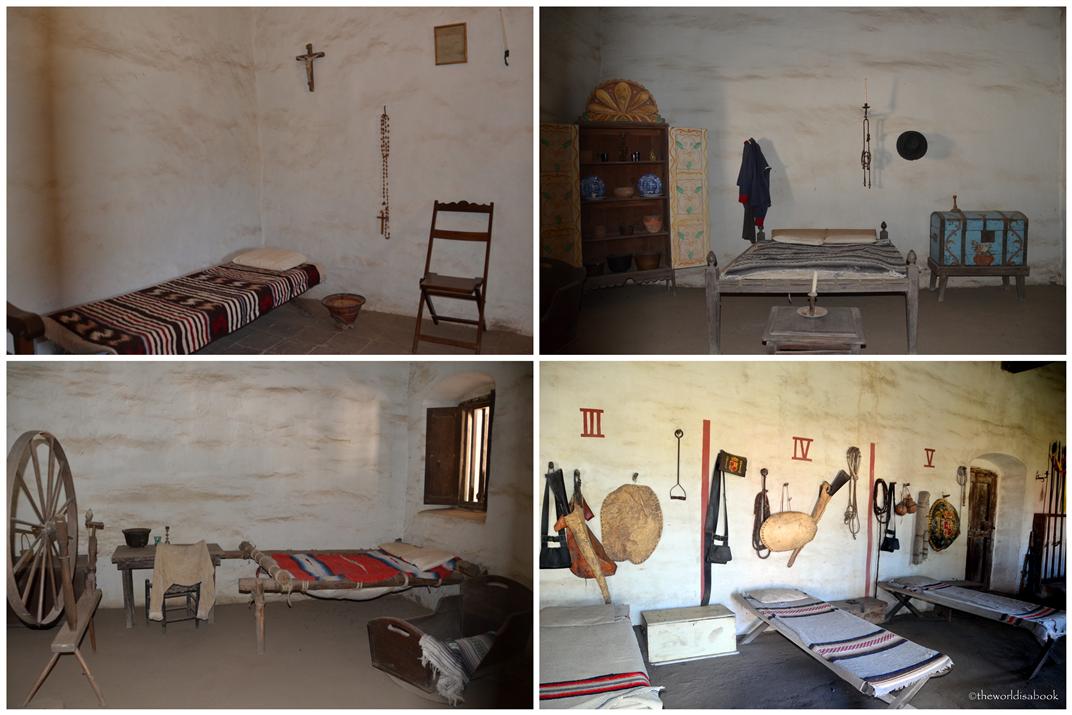
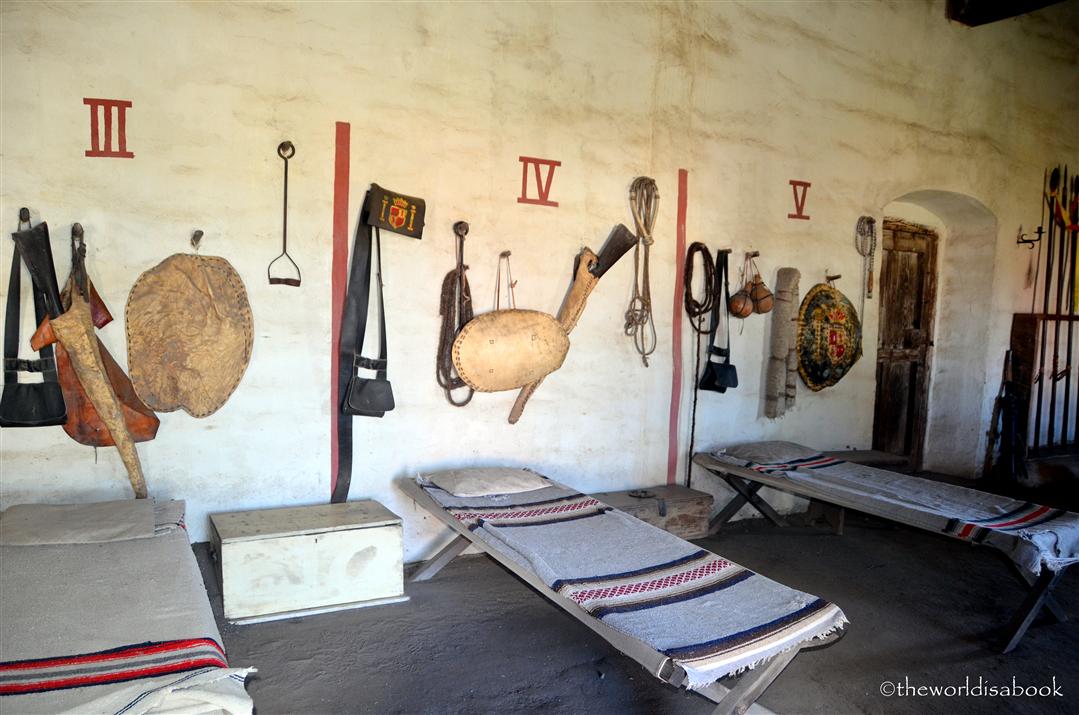
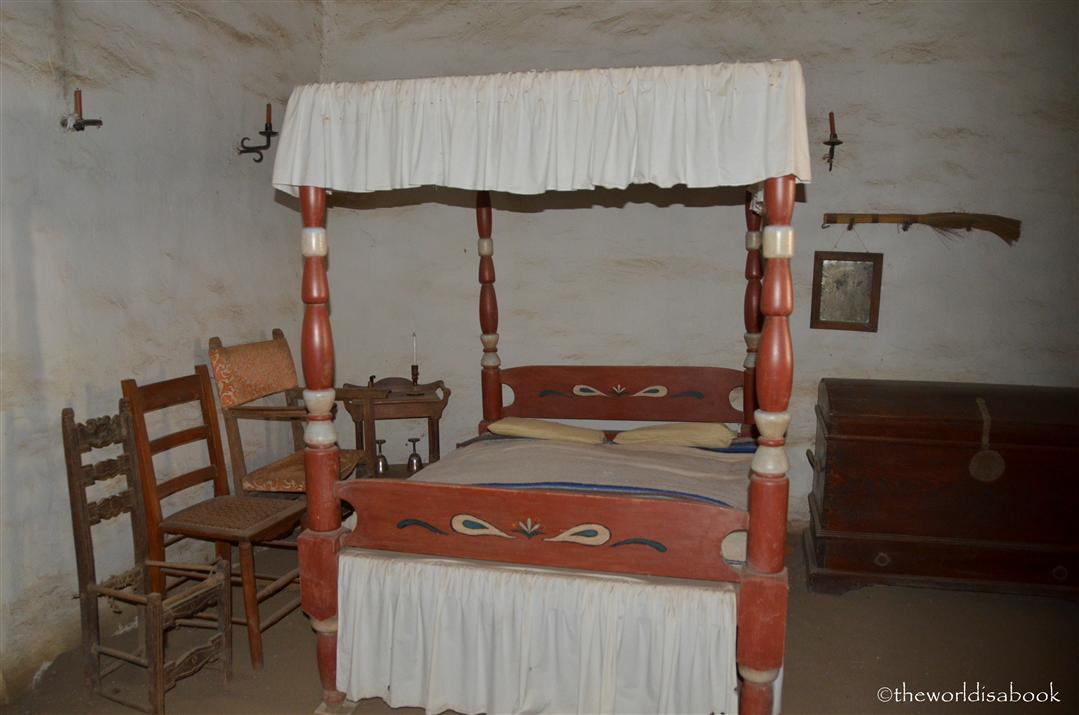
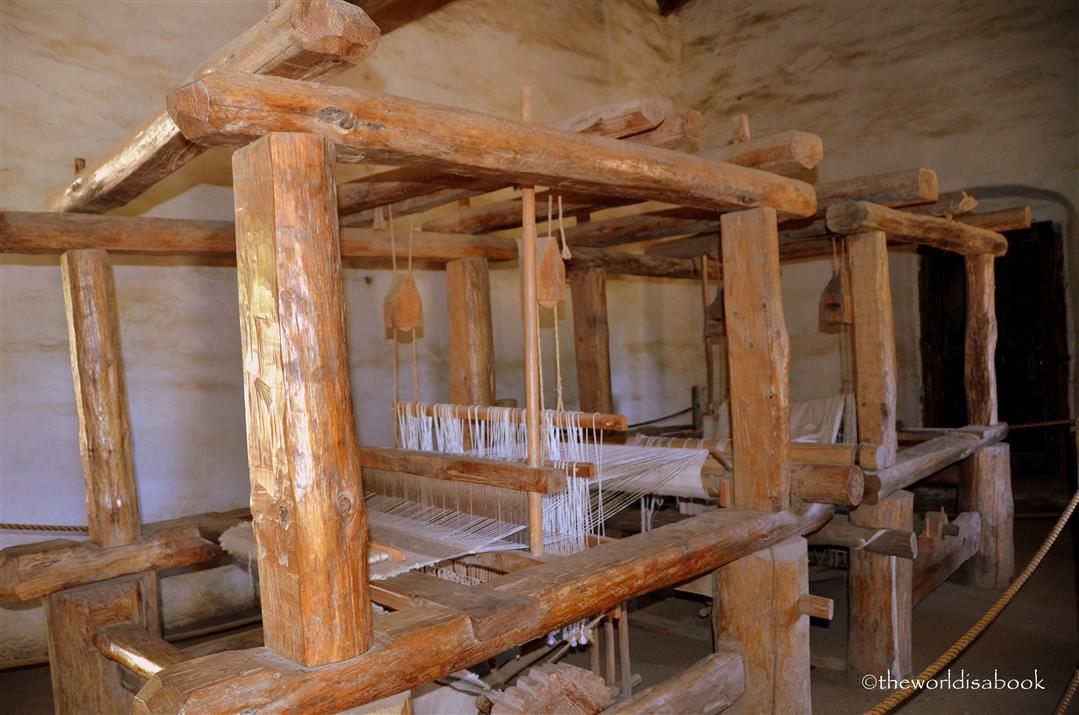
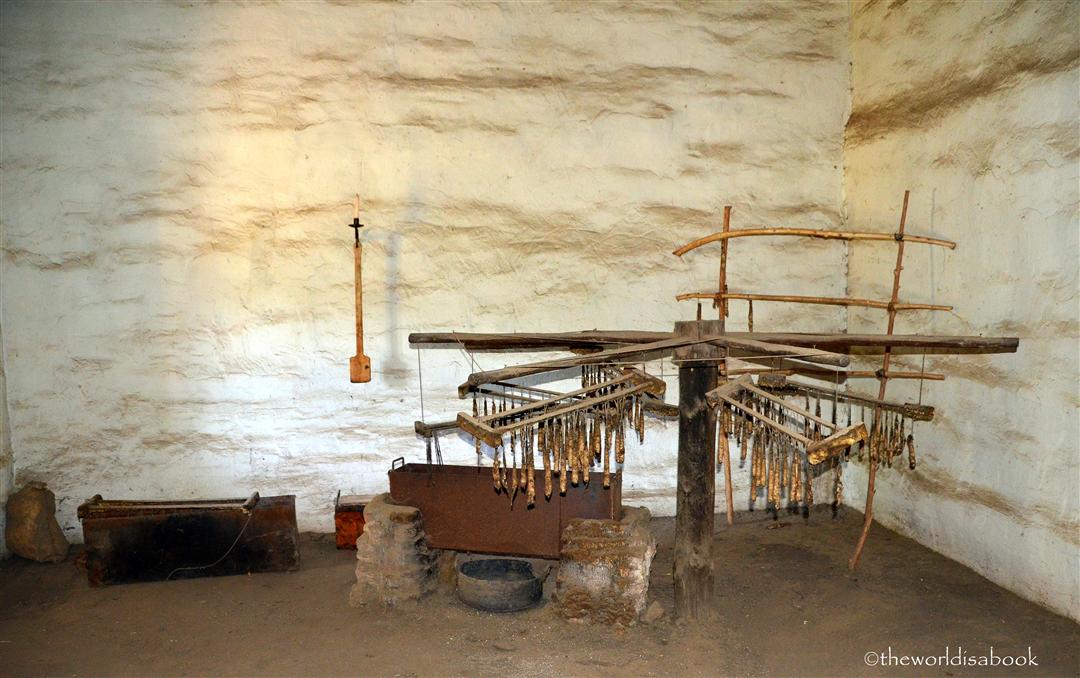
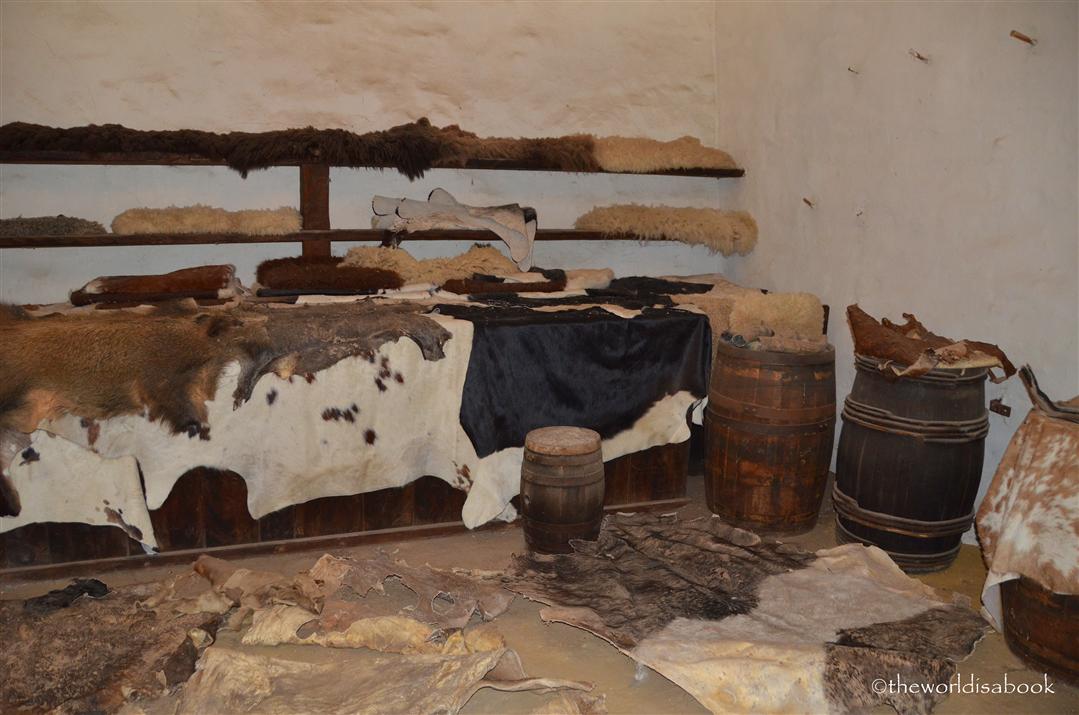
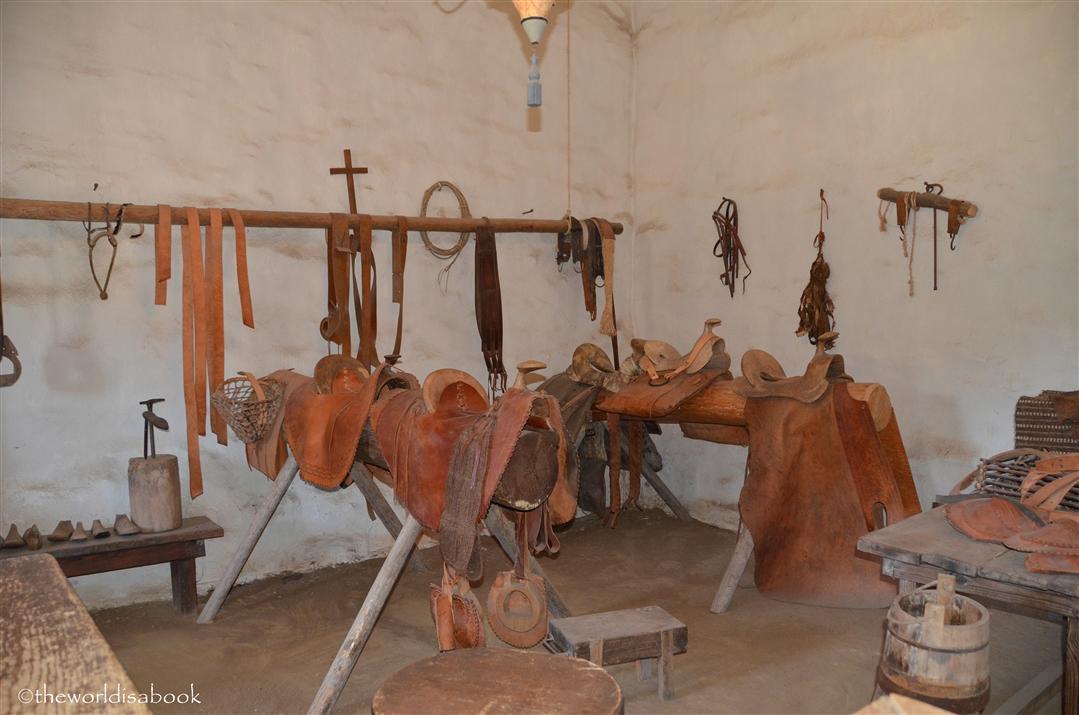
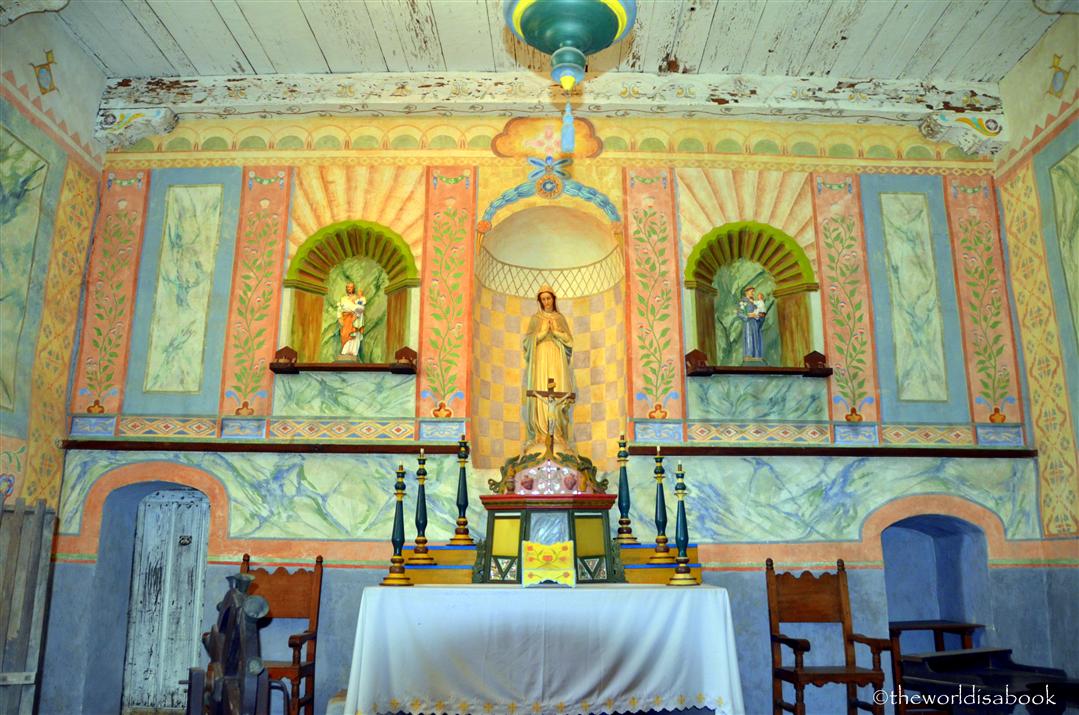
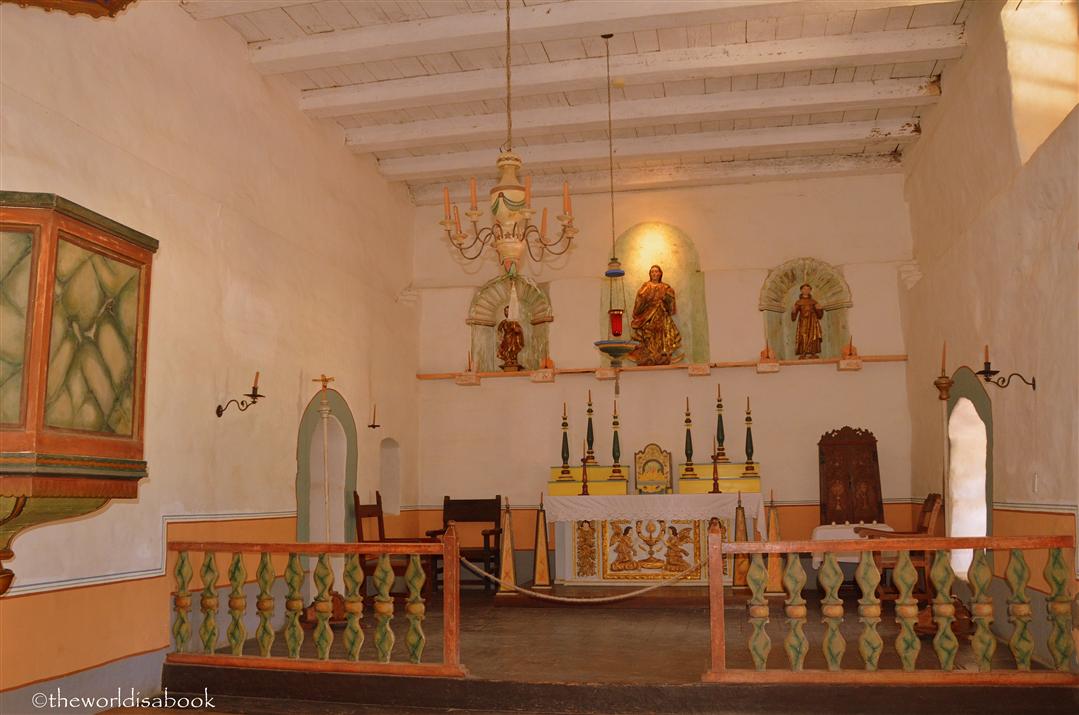
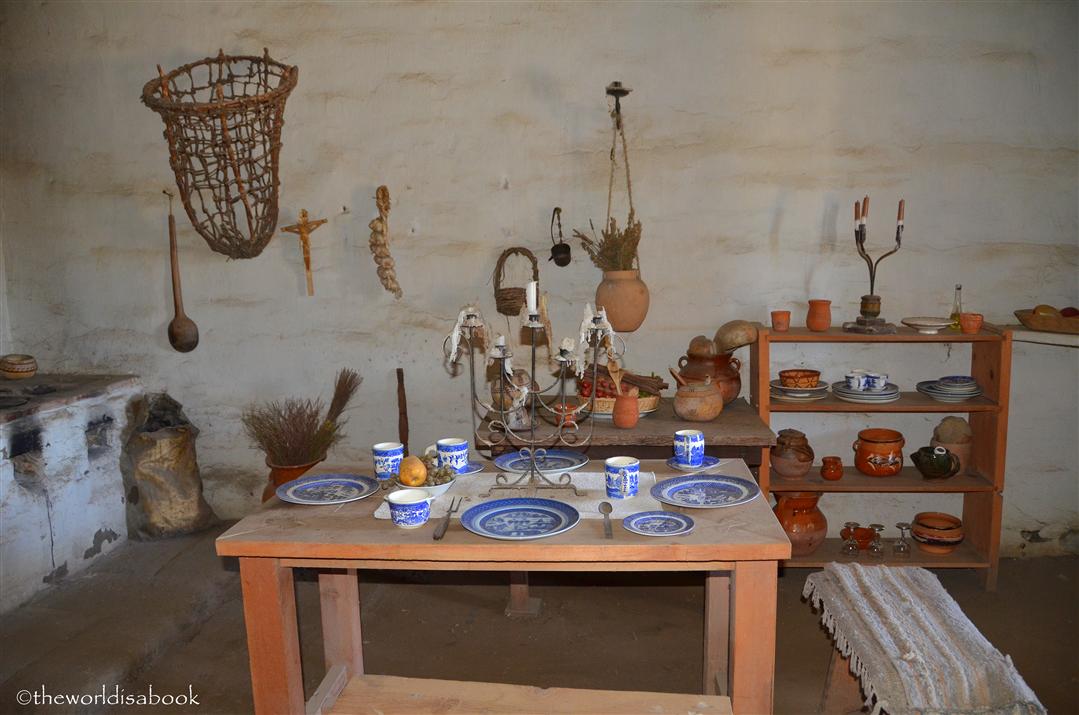
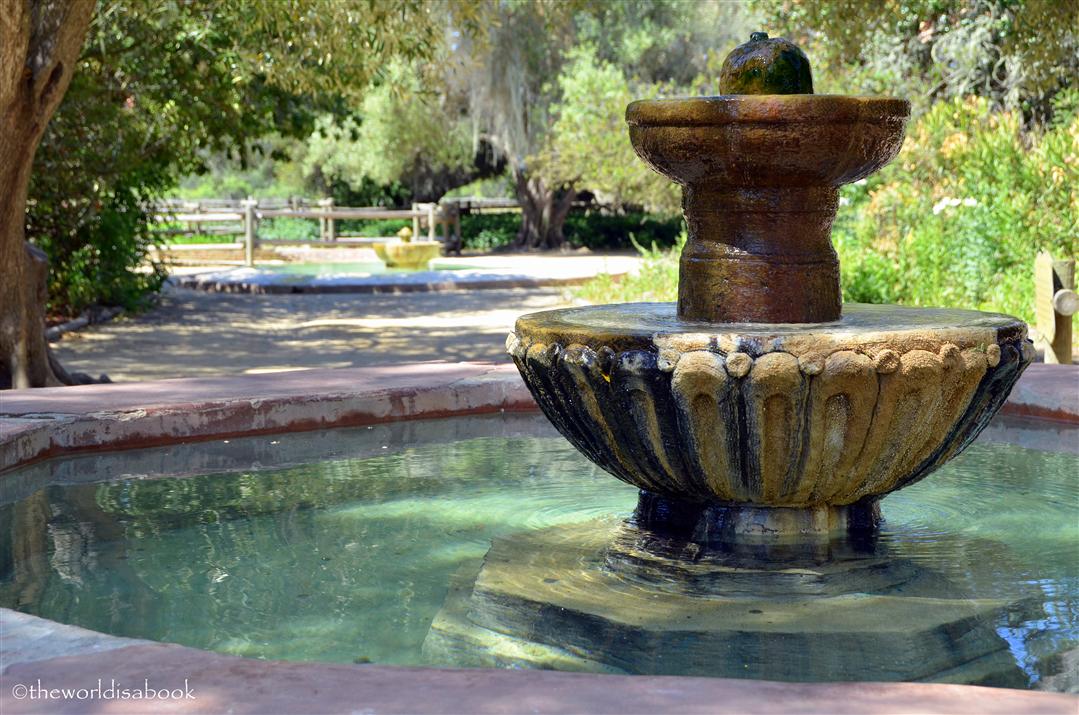
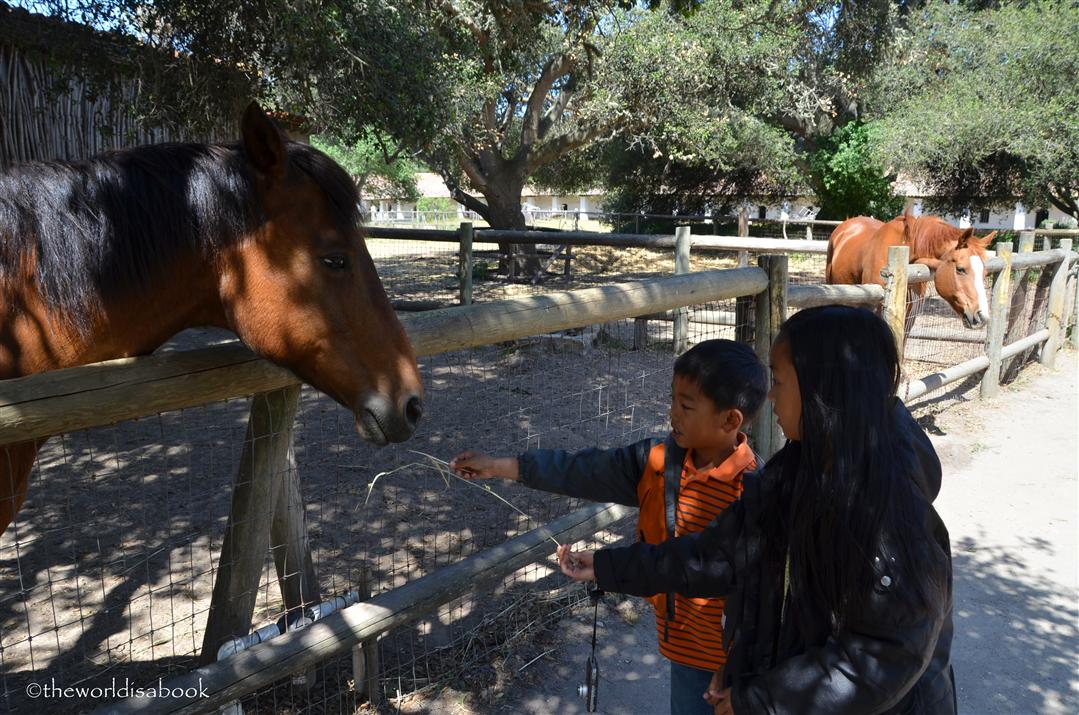
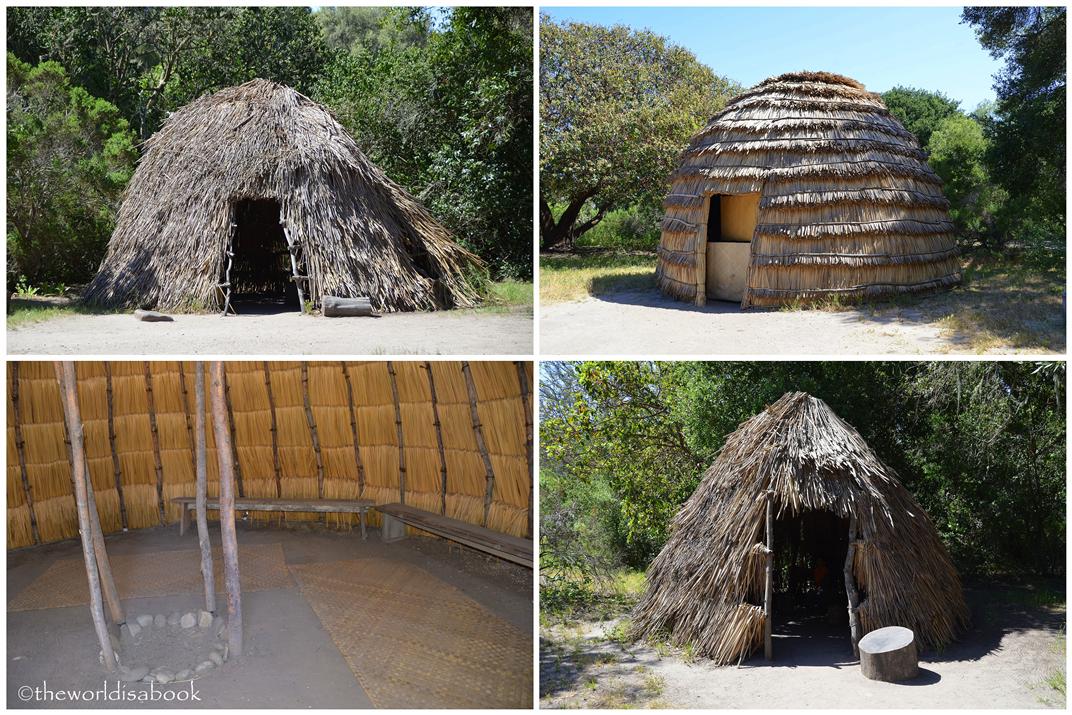
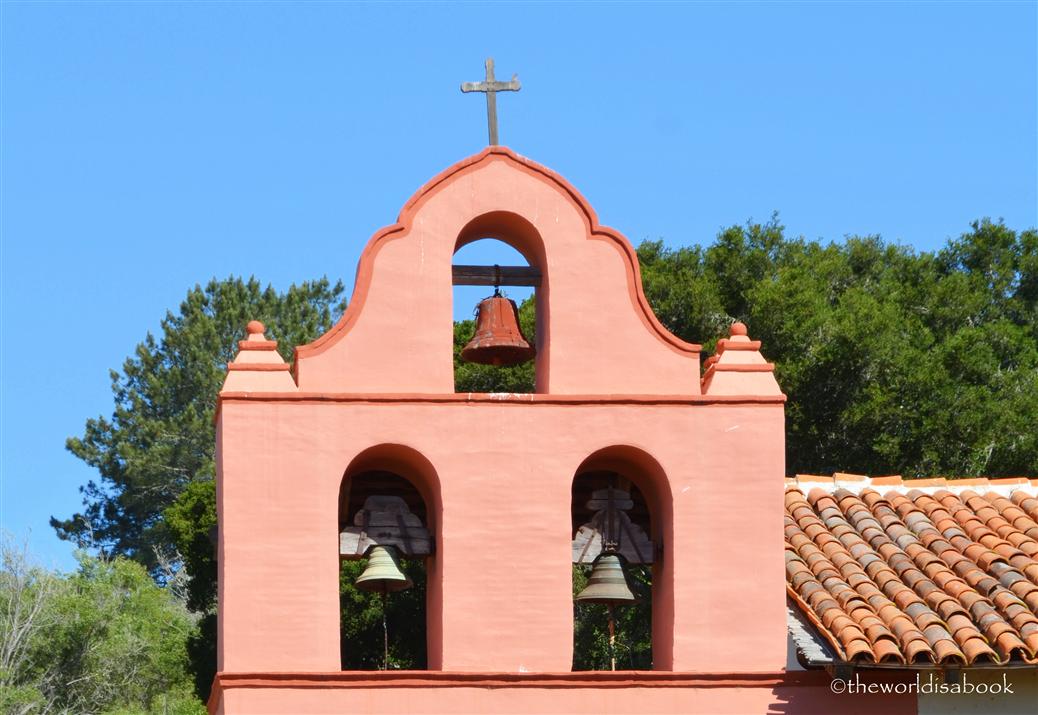
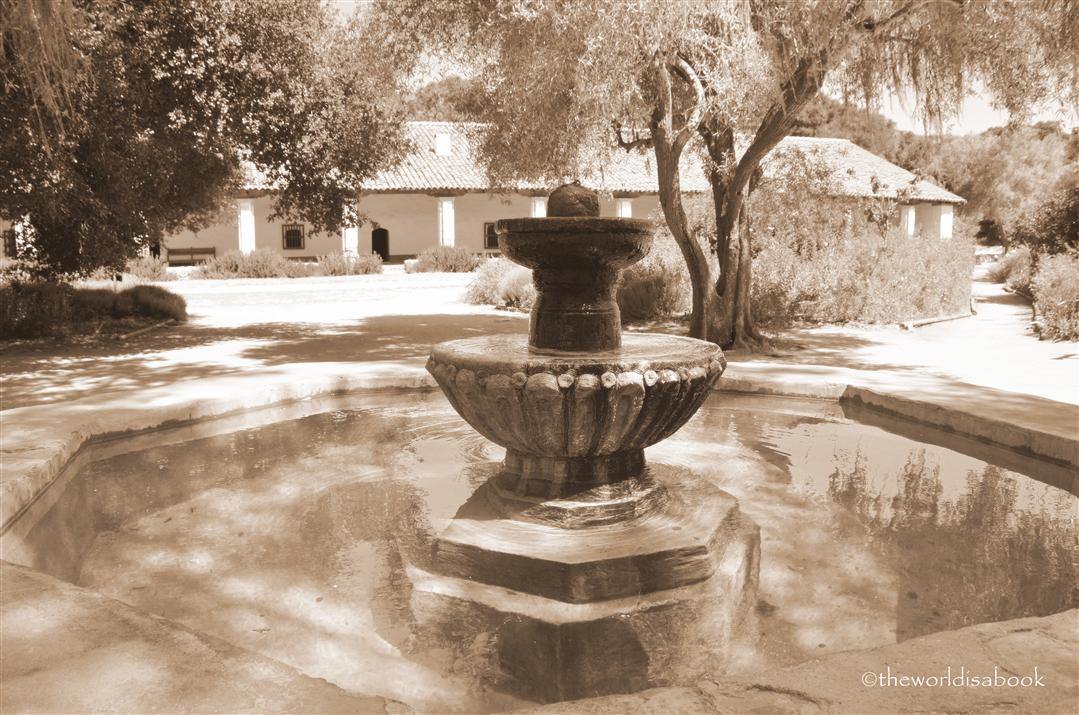
Why are there no other people there? Did you go on the off peak season or is it not usually visited? I love the pastel-colored altar and the fountains. I would love to sleep in the four-poster bed too; the bunk beds look a bit uncomfortable.
It was a Sunday morning on a holiday weekend. There were a couple of other families there. Maybe everyone else was still in church? This was one of the less visited missions since it’s not near a freeway or a major city.
That first photo is so beautiful it seemed like a painting. Most interesting story and photos to go with it!
Thanks Jackie! I love that vineyard shot too.
Hi Mary, I am not familiar with the missions. Looks like a good day out and I particularly like the pink walls and classic spanish architecture of the corridor.
The missions are not very common tourist attractions and not even in California. They’re mostly visited during field trips or by history buffs. But, they are pretty and have lovely grounds.
I’ve only been in the mission in Santa Barbara, many years ago. The missions remind me of the Hitchcock film Vertigo.
So intriguing California’s Spanish past. Also interesting to imagine how California might have been, had it remained Spanish.
It would have been interesting to see how California would have become. It’s wonderful to still see a lot of these Spanish influences around the state though. I need to revisit Vertigo to see its setting.
A Step Back in Time… I agree with that :)
It definitely was a great lesson in history. Thanks Muza-chan!
Looking at the soldier’s beds makes me wonder how tall those guys were. In this day and age there would be a lot of feet hanging over the edge. The setting looks lovely and though the inside appears austere it also looks like a great place to contemplate life. Interesting that your family were the only people around.
It was a very peaceful place to visit. Those beds were just uncomfortable looking no matter what size anyone is. It was a bit weird to not have many people around but we liked having the place to ourselves. Thanks Leigh!
What an interesting place to spend some time. I love how blue the sky was in all of your photos. I’m also surprised that you were the only people visiting on such a gorgeous day.
It was a beautiful day for a visit. This was one of the more interesting missions we’ve visited but well worth the drive.
A beautiful job of presentation. Thank you for reminding me of a mission I visited so long ago that I can barely remember it. I don’t recall the historic recreation of the workshops, etc. Perhaps that is a bit newer. But what a great place to visit.
Thanks Vera! It was a great place to visit and we were a bit disappointed to have missed the docents all dressed up. It would have been a wonderful experience.
Another instance of promises made that were never kept. That seems to have happened a lot back then but it continues even now.
It is a beautiful mission with a rich and fascinating history. Thanks for sharing your find with us, Mary. I’ve seen similar straw huts in parts of Africa. They look so small by our standards, I can’t imagine an entire family living in them.
Thanks Marcia! i’m not sure how many Indians lived in those huts but it was so simple looking. There are still some Chumash Indians living nearby but I don’t know what the status is with their claims.
the scenery, the weather, the fresh food. there is nothing to not like about california.
Yes, indeed! Glad to live in this wonderful state with plenty to explore.
I think it’d be very interesting to go during one of the Living History days. But my boys would probably prefer a ghost tour. This restored mission does a great job of conveying what it looked like. Thanks for showing us around.
I’m not sure about the ghost tour. It was eerie enough being there with hardly anyone around during the day. I would love to go back and see all those costumed people and activities too. I’m sure it would heighten the experience.
The California missions are so interesting. I haven’t been to Mission La Purisima, but would love to see it. The first mission I visited was the one in San Diego when I was about 6 or 7. Even then, I thought it was very cool.
Surprisingly, my kids love going to the missions. My daughter has found a whole new appreciation for them since studying California history last year. They are such a big part of the state’s history and I’m glad they’ve kept them well maintained.
These are wonderful captures showing the place. The chapel looks so colorful!! The beds, candle making room and the rest of the pics are so fascinating…
Have a lovely day Mary :)
Thanks Arti! The colors in the chapels were indeed very beautiful! There were so many interesting things about this mission.
I love the colors and patterns in the woven blankets.
Despite its age, everything was so well maintained. Makes you almost wish they sold the blankets at the gift shop :)
Takes you back in time for sure. For some odd reason (or is it odd after all) these photos reminds me of the movie Zorro.
I love these types of living history museums – the kids learn so much more about history from them than they do from reading books!